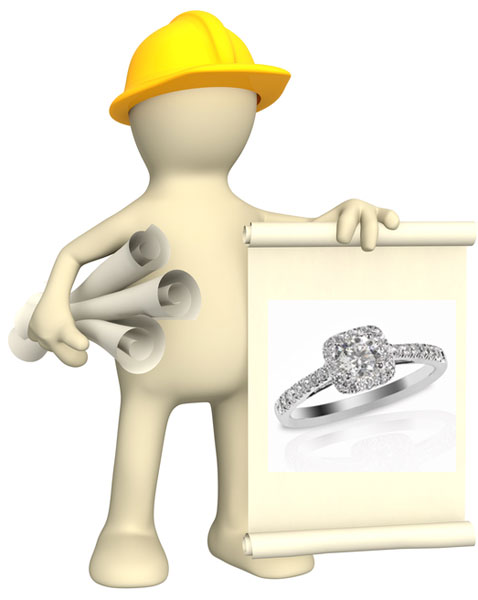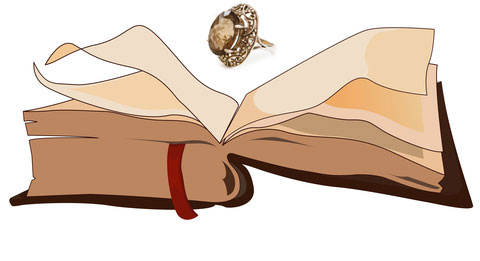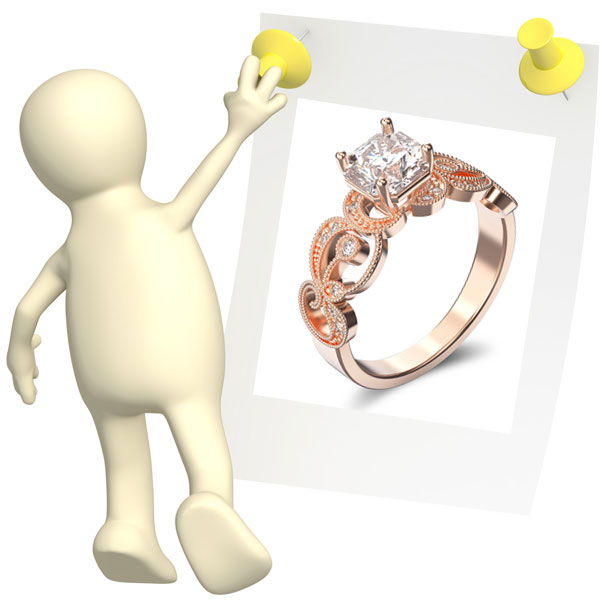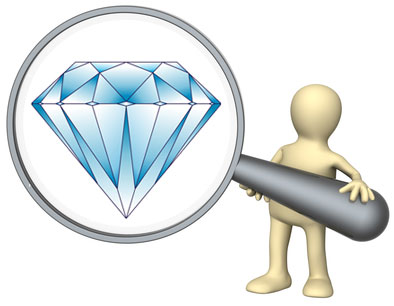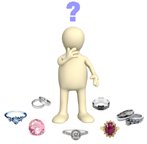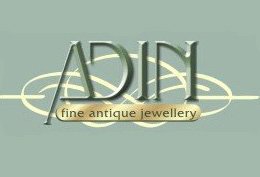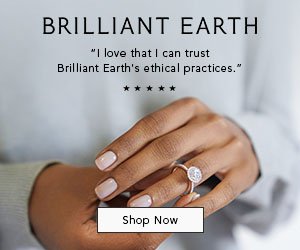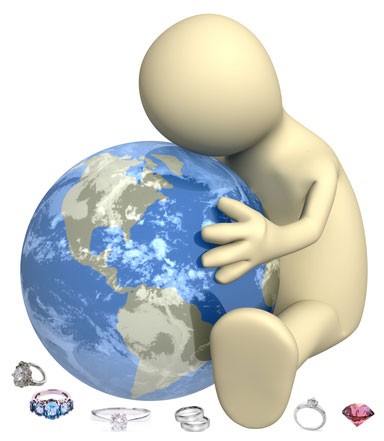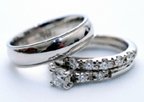1916 Engagement Ring
by Sue
(Denver, CO)
Hi,
I have my grandma's wedding and engagement ring. They were relatively well-off farmers in central Illinois. They were married in 1916. The band is a wide 18K gold band. The engagement ring is a solitaire size band with a milky white sphere as the gemstone, set as if it were a pearl (but I'm sure it's not).
I have taken it to many jewelers, even at the trade shows. One said it was glass. One said that it is DEFINITELY NOT glass, that it is probably opalite or, in the same family, chalcedony or agate. But I can't find anything saying that opalite was used as an engagement gemstone as early as 1916. Another one said it is definitely not opal. I've checked it out on my microscope and you can see several tubes running up from the point of contact, and faint colors. There are no inclusions except for a couple of tiny bubbles at the end of the tubes. The jeweler said that they are NOT glass bubbles.
I've searched the internet over the last 10 years, and can't find out what gemstones were used in 1916.
Have you any ideas?
Thanks for your attention!!!!!

Hi Sue,
Thank-you for sharing a pic of this remarkable antique ring - it is enchanting to say the least!
Regarding the materials used in the center stone, I’m a little confused about the answers you received after having it checked by other jewelers – but I suspect that the ring is probably made with either chalcedony or, despite what the other jeweler said, glass.
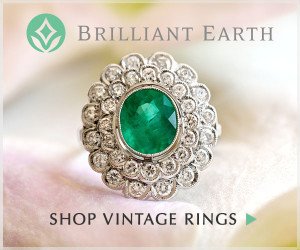
The gemstone does not resemble a pearl – nor does it look like opal or moonstone. Concerning opalite – there are a few different materials which are referred to as opalite, so if the jeweler didn’t specify exactly what type of opalite he/she meant that doesn’t help much.
Opalite is term that is usually reserved for glass that is created for crafting jewelry. This is the most common use of the term opalite – but the center stone on this ring does not look like opalite glass….which usually has a soft blue color and some luminescent qualities.
Opalite can also refer to common colored opal – which this stone is not – and a colored quartz stone which has added impurities, but the stone in your ring is not that type of opalite either. So, I’m assuming that the jeweler thought your ring was made with some type of glass-opalite.
And while I’m not sure on the specific time period when opalite was first created, glass gemstone replicas – like opalite – were used as early as the 1600s.
Chalcedony is a type of quartz, and agate is a type of colored chalcedony – so, the ring is not made with agate. But, it could be made with a solid white chalcedony – and chalcedony was a very popular jewelry gemstone during the late 1800s and throughout the early 1900s. Glass though was very popular during this time, and it is not uncommon to see glass made to look like chalcedony or opal or other types of gemstones for use in jewelry during this time too.
The only thing regarding solid white chalcedony is that usually chalcedony is not entirely opaque, as this gemstone appears to be. White chalcedony, even with a high polish, generally does not achieve the mirror-like shine of the stone in your ring either – which further leads me to believe that you could have a glass-chalcedony simulant in the ring. And you mentioned that the jeweler said the bubbles present on the surface of the stone are not glass bubbles – but they really appear to be glass bubbles from the image.
One other possibility is that the ring is crafted with solid white jasper – but white jasper usually has some variations of light gray to bright white within the stone…….whereas this stone appears to be a completely solid white. Also, the small bubbles on the surface are not something one would ordinarily see in a jasper stone.
So – how to know for sure what the ring is made with? Your best option is to take the ring to an American Gem Society certified gemologist. I performed a little research for Denver, and found the American Gem Registry in Denver – I think this would be the best place to go for a qualified analysis on the center stone of the ring.
Here is the link to the Denver AGR website: http://www.gemlab.us
I wish we could offer more conclusive information as to what the center stone could be, but for a 100% correct answer the stone needs to be analyzed. If you do decide to have the stone analyzed by a gemologist, please write back with the results – we would love to hear a final answer on this stone too!
Suzanne Gardner
Everything Wedding Rings
Comments for 1916 Engagement Ring
|
||
|
||
Recommended & Trusted Jewelers
Our Advertisement Policy
Adin Fine Antique Jewelry
Use Code=Everything-Wedding-Rings
For a 5% Discount





